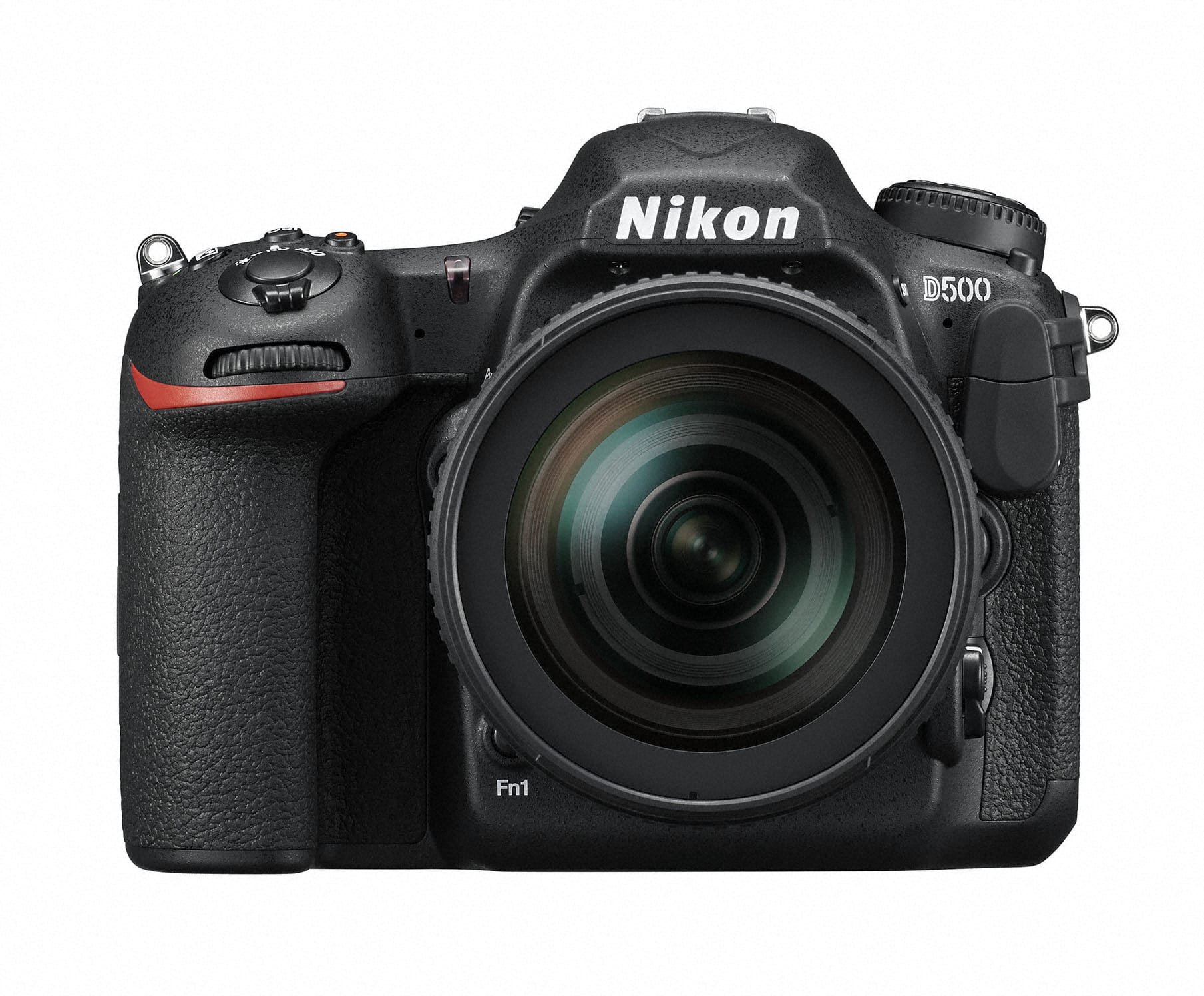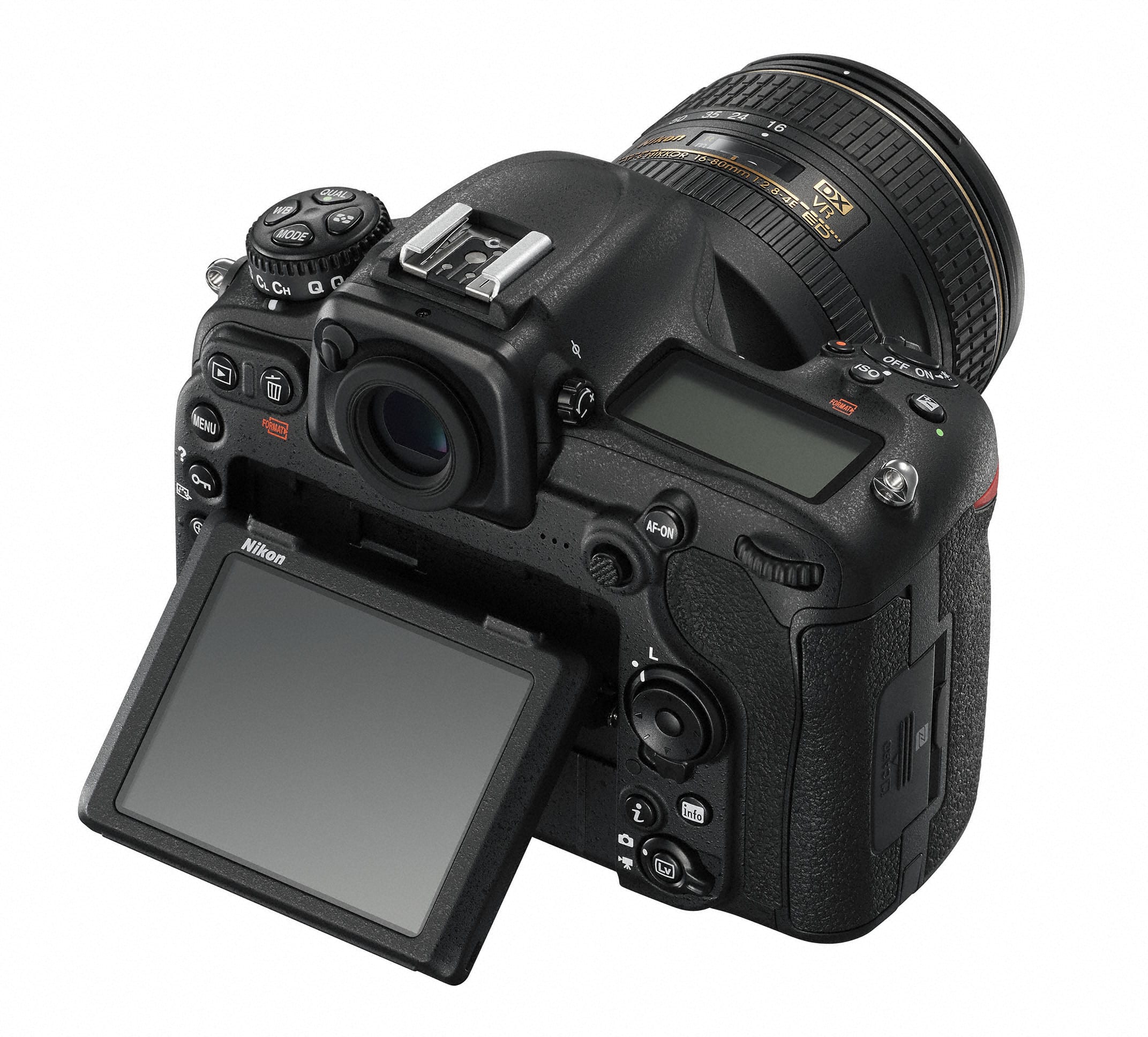Launched at CES 2016 in Las Vegas, Nevada, the new D500 is Nikon’s fourth DX-format model, and the first camera of this kind for seven years.
Nikon launched the camera immediately after the announcement of the D5, its new flagship FX-format DSLR, and were keen to position the D500 as a DSLR that offers the benefits of the DX-formats at a cheaper price, with a more practical, lightweight and user-friendly body.
A successor to the the entry-level D3300, D5500, and more advanced D7200, the D500 is without doubt Nikon’s most advanced camera of its kind, incorporating the same 153-point AF system as the more high-end, professional-targeted D5.
Like the D5, the camera offers high-speed continuous shooting at approximately ten frames per second.
The D500 supports 4K UHD movies, while the new EXPEED 5 image-processing engine enables both still and moving images, as well as a sensitivity range from ISO 100 to 51200, expandable to Hi 5 (ISO 1640000 equivalent).
The D500 has a touch-screen and tilting monitor, and is compatible with SnapBridge, Nikon’s new smartphone connection platform.
Simon Iddon, Head of Product Management, Nikon UK, says: “We are thrilled to introduce the D500 to our current DX D-SLR line-up. The D500 combines superb image quality with an agile body.
“With high-speed continuous shooting and exceptional AF performance, capturing fast-moving subjects is easier than ever for photographers out in the field. This new flagship model consistently delivers, offering the imaging power of the D5 in a lightweight, compact body.”

Here are the D500’s Primary Features:
Powerful 153-point AF achieves superior subject acquisition performance across a wide range of situations
The D500’s Multi-CAM 20K autofocus sensor module offers a dense configuration of 153 focus points (99 cross sensors) that covers a wide portion of the image area, meaning that even fast-moving subjects can be shot precisely.
AF capability is extended down to -4 EV* with the central point and -3 EV (ISO 100, 20°C/68°F) with all other points, making AF usable even in low light or when shooting low-contrast subjects. This is aided by a newly-employed AF engine and 180K-pixel RGB sensor.
High-speed continuous shooting at approx. 10 fps for up to 200 shots (14-bit lossless compressed RAW)
The D500 delivers high-speed continuous shooting at approx. up to 10 frames per second (when fully-charged) for up to 200 shots in JPEG and in 14-bit lossless compressed RAW, without any drop in shooting speed. Moving subjects can be tracked accurately across a wide field of view, taking advantage of the camera’s stable viewfinder image and a widest-ever diagonal viewing angle of approx. 30.8°.
A compact DX system — added agility in telephoto shooting
Nikon‘s DX-format D500 provides an angle of view equivalent to that of a lens with an approx. 1.5x longer focal length – the equivalent of a 135mm-format. This permits telephoto shooting using smaller, lighter lenses with a shorter focal length. The camera’s agility is also enhanced by the kit lens, AF-S DX NIKKOR 16-80mm f/2.8-4E ED VR, the lightweight 5x normal zoom lens, which weighs only approx. 1340 g/2 lb 15.3 oz when attached to the D500.

4K UHD video
The D500 can record 4K UHD (3840 x 2160)/30p/25p/24p as well as 1080/60p video for up to 29 min. 59 s, with simultaneous output via HDMI available. It is also possible to generate 4K UHD time-lapse movies within the camera. In Full HD or HD mode, the D500’s electronic Vibration Reduction function reduces the effects of camera shake in the horizontal, vertical and rotational directions during hand-held movie recording, while Active D-Lighting preserves details in highlights and shadows to capture footage with natural brightness.
New EXPEED 5 image-processing engine achieves sensitivity up to ISO 51200, expandable to Hi 5 (equivalent to ISO 1640000)
The D500’s new EXPEED 5 image-processing engine, as used in the D5, delivers standard ISO sensitivity from 100 to 51200, expandable down to Lo 1 (ISO 50 equivalent) and up to Hi 5 (ISO 1640000 equivalent). It can capture high-definition images, while reducing noise at high ISO settings. The new 180K-pixel RGB sensor (approx. 180,000 pixels) aids the performance of the camera’s Advanced Scene Recognition System, and its flicker reduction for still images reduces exposure variations even under flickering light sources.
Touch-screen, tilting 8-cm/3.2-inches, and high-resolution monitor
The D500’s touch-panel monitor enables users to instantly switch between images using the frame advance bar and text input — shared with the D5 — as well as touch AF and touch shutter (in still shooting). The tilting monitor with 3-axis hinge structure allows you to shoot from more flexible angles for stills and movies. And its large 8-cm/3.2-in. screen with 2359k-dot resolution lets you focus precisely.
Smart device linking technology via Bluetooth and Wi-Fi
The D500 can be constantly connected to a smart device (both iOS and Android) with Nikon’s new SnapBridge application. Connecting via Bluetooth or Wi-Fi, SnapBridge allows one to automatically transfer images taken with the D500 to your smart device, as well as upload them automatically to Nikon Image Space. You can also use the smart device to browse images stored in the camera, as well as embed images with its location and date/time information.
WT-7/A/B/C Wireless Transmitter (optional) enables high-speed wired/wireless LAN communication
Nikon‘s WT-7/A/B/C Wireless Transmitter is aimed at professionals who need to transfer images more quickly than they can with built-in wireless LAN. When attached to the D500, it allows images and movie files to be transferred to computers or FTP server via both wired and wireless LAN. The D500 with WT-7/A/B/C can be used as a wireless LAN access point.
The D500 retails at £1,729.99. With a 16-80mm lens included, the camera costs £2,479.99. The D500 will be on sale from March.
